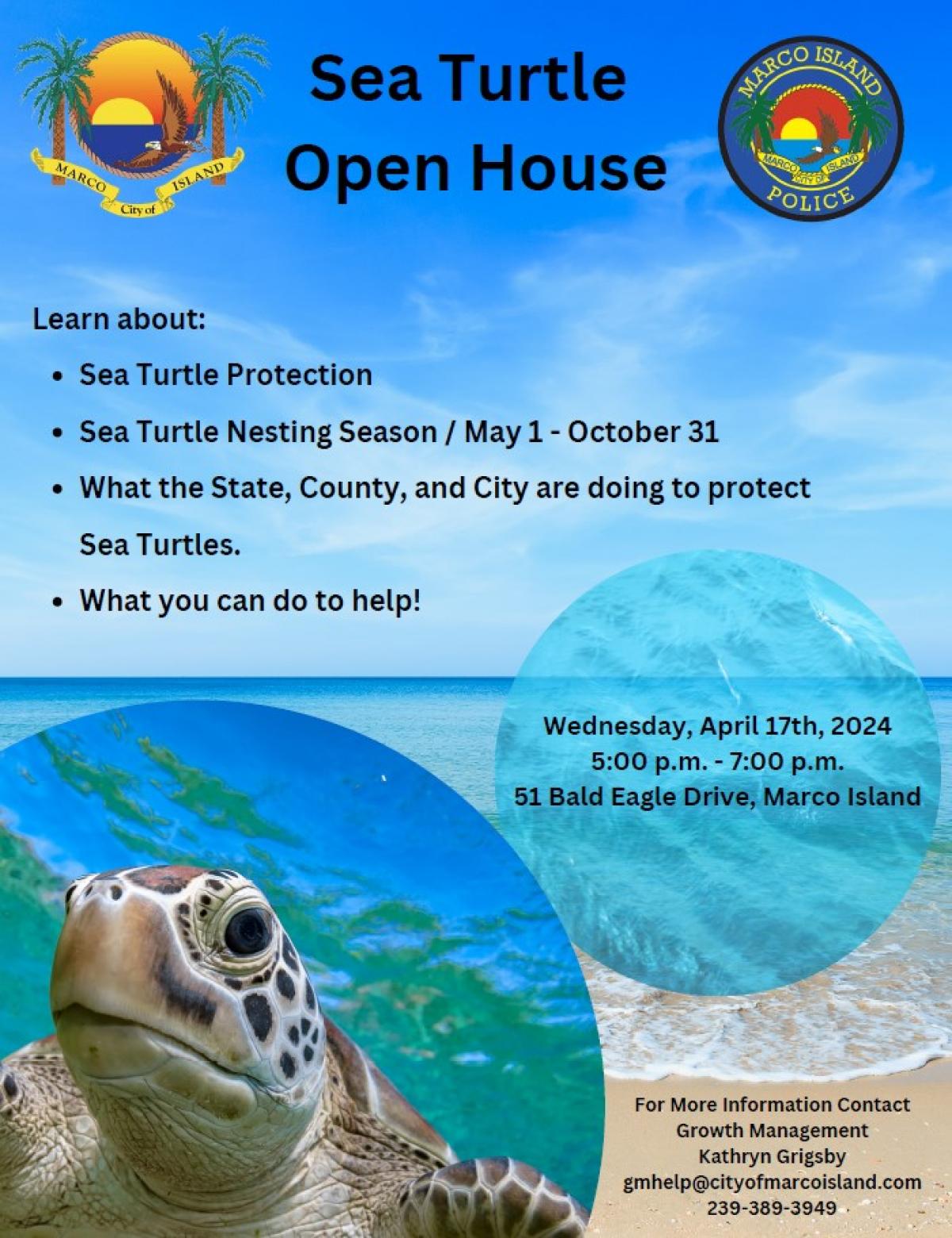Sea Turtle Conservation

Did you know that on average there are 80 Loggerhead Sea Turtle (Caretta caretta) nests per year on the 4 miles of Marco Island’s beach?
Whether you live here or are just visiting, you can easily participate in protecting these threatened creatures and their important nesting environment.
Each May and continuing through early August, female loggerhead sea turtles crawl out of the Gulf of Mexico and nest on Marco Island’s beach. The baby turtles, or hatchlings, will emerge 60 days after the nests are laid. Hatchlings generally are emerging from early July through the end of October each year.
Marco Island beach is vital to the sea turtle’s continued survival in Southwest Florida.
How can you help? 3 Simple Ways!
1. Beach Lighting Compliance
Crawling onto the beach at night, the female turtles lay their nests and then instinctively are compelled back to the naturally bright horizon over the Gulf of Mexico. Artificial lights on the upland and shoreline disorient the sea turtles and deter them from nesting or from returning to the ocean.
Likewise, the hatchlings will travel inland toward the brighter artificial light, using the energy they need to swim into the Gulf of Mexico. If they are disoriented, they often die from dehydration and are easily preyed upon by fire ants, ghost crabs, and birds.
If you can see your shadow on the beach at night – the light is too bright!
To Decrease Disorientation of Sea Turtles:
- Turn off all unnecessary lights
- Close blinds and curtains
- Shield light sources
- Apply window tint to windows
- Don’t use decorative landscape lighting on the beach side
- Plant vegetation buffers between light sources and beach
- Don’t use flashlights or flash photography on the beach at night.
2. Keep Beach Free of Barriers
All beach furniture, equipment, and garbage should be removed from the beach every night. Pick up your trash! Sea turtles need a beach free of barriers for nesting and hatchling success.
3. Report Injured or Dead Turtles
In the event you discover an INJURED or DEAD sea turtle, please notify one of the following agencies immediately:
- City of Marco Island
- (239) 389-5000 (Weekdays)
- (239) 793-9300 (Weekdays/Evenings)
- Collier County Natural Resources Department
- (239) 732-2505 (Weekends)
- Page #:(239) 890-6486 (Weekends/Evenings)
- Florida Fish & Wildlife Conservation Commission
- Sea Turtle Stranding Network: 1-888-404-FWCC (3922)
It takes a female turtle 1 to 3 hours to lay an average of 100 eggs in the sand.
- A female turtle can nest several times per season (up to 7), but may only nest every 2-3 years.
- The female turtle uses her rear flippers to dig the nest cavity before depositing her eggs.
- Male turtles spend their lives in the open ocean never crawling up on the beach.
- The temperature of the sand determines the sex of the hatchlings.
- It is estimated that only 1 in 1000 sea turtle hatchlings will survive to reproductive maturity.
- Sea turtles cannot retract their heads into their shells.
- A group of sea turtles is called a flotilla.
Federal:
Endangered Species Act
Caretta caretta was listed as threatened in 1978.
Florida State:
Florida Marine Turtle Protection Act
Collier County:
Sea Turtle Protection Ordinance
Land Development Code
Section 3.10
City of Marco Island:
Sea Turtle Protection Ordinance #01-35
Conservation is the Solution.
Online Sea Turtle Lighting Workshop
Sea Turtle Conservancy (conserveturtles.org)
Sea Turtle Research
Collier County Sea Turtle Protection
Rookery Bay Sea Turtle Monitoring

Parks & Recreation Facebook MIPD Facebook
Fire Rescue Twitter
Parks & Recreation Twitter
Marco Island Police Twitter